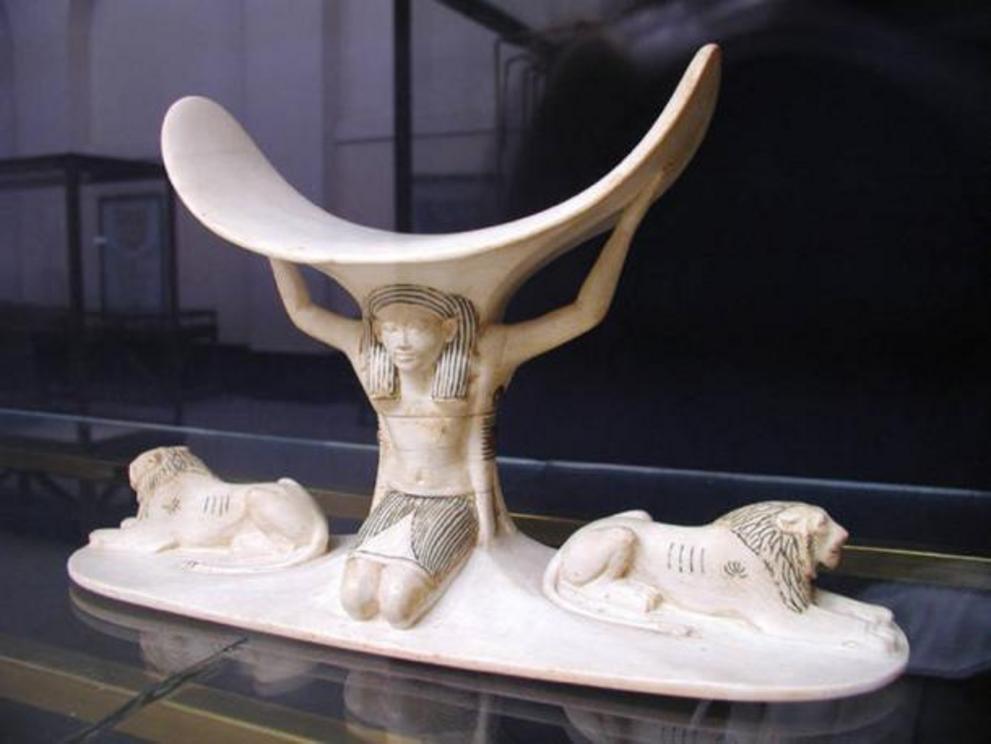Ancient Egyptians slept on pillows made of stone
Top image: Egyptian limestone figures depicting stone pillows in the collection of Metropolitan Museum of Art in New York.
Human beings have been enjoying the soft comfort of pillows for the last 2,000 years. But before this feather-filled luxury, people were accustomed to resting their heads on pillow-like headrests made of stone.
The ancient Egyptian equivalent of a pillow, typically called a headrest, was designed to keep the head elevated during sleep. It usually consisted of a flat base and then a concave section on its upper side to cradle the head. Headrests made of marble, ivory, ceramic, stone, wood and even glass have been found in Egyptian tombs from 3,000 BC up until 30 BC.
 One of eight headrests found in the tomb of Tutankhamun, this elaborately carved ivory headrest depicts the god Shu supporting the carved element where the king’s head would have rested.
One of eight headrests found in the tomb of Tutankhamun, this elaborately carved ivory headrest depicts the god Shu supporting the carved element where the king’s head would have rested.
Egyptian stone pillows served a practical function. With beds positioned close to the floor, headrests would help prevent insects and vermin crawling into one’s mouth, nose, ears or across the face. Now the idea of a stone pillow begins to sound a little bit more appealing!
In hot climates, the headrest would also allow air currents to flow under the head and cool the sleeper.
But Egyptian stone pillows served more than just a pragmatic application. In ancient Egypt, the head was believed to be the seat of spiritual life and therefore it needed to be protected. Stone headrests were often engraved with protective imagery, such as the god Bes , a protective deity of sleeping people whose fearsome appearance drove away evil. The headrests were also placed under the heads of the deceased to keep bad spirits away.
The idea of the soft pillow was finally introduced by the ancient Greeks and Romans, who used pillows made from cotton, reeds or straw. The elite, however, experienced the luxury of pillows filled with soft down feathers.

